From The Beatles to Dalai Lama: 100 years of Caird Hall
- Published
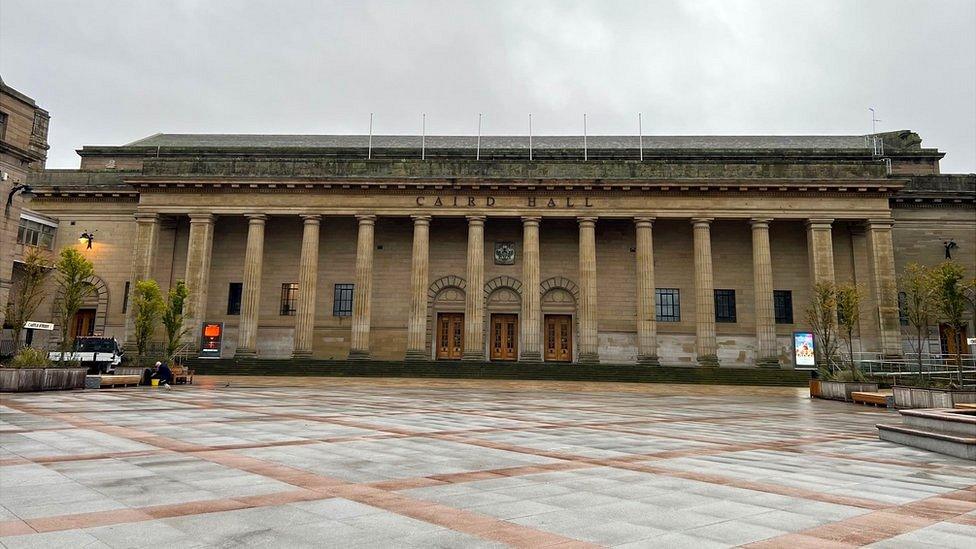
Caird Hall has been a feature of Dundee city centre for a century
Its stage has been graced by everyone from The Beatles to Frank Sinatra and the Dalai Lama, and now Dundee's Caird Hall is celebrating its 100th birthday.
Countless musical acts and entertainers have performed there and thousands of students have graduated in its hall.
Its exterior even doubled for a Moscow theatre in a 1983 BBC TV drama.
But its construction marked the end of an era for the city centre, with many buildings demolished to make way for the new attraction.
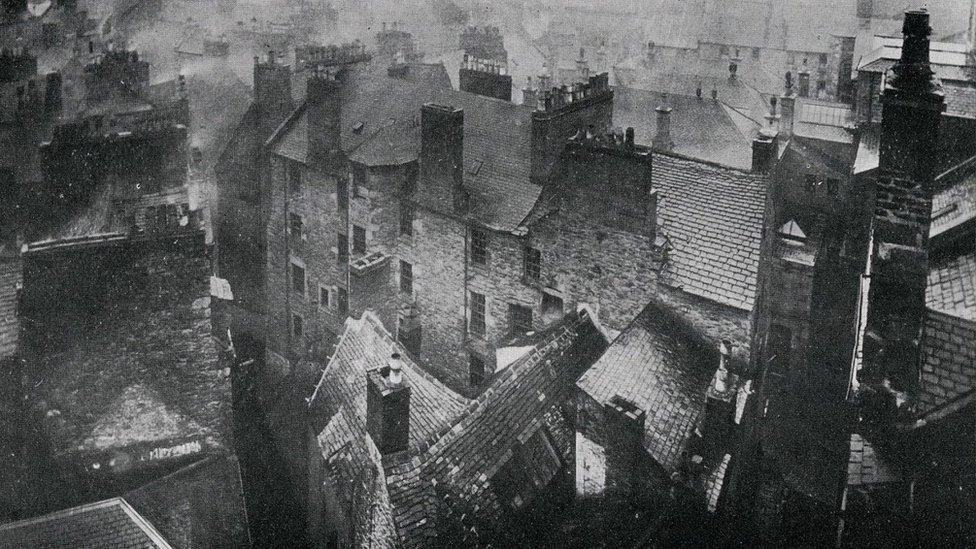
Many tenements in Dundee city centre were demolished to make way for Caird Hall
Dundee University archivist Kenneth Baxter said Caird Hall followed a long period where Dundee had been keen to rebuild its city centre.
He said: "There was a big period of clearance in the 1870s and 1880s, where the High Street was widened and the Union Hall and Trades Hall were taken down.
"At the same time there were concerns that Dundee's civic buildings were not grand enough.
"If you look at other great manufacturing centres that Dundee saw as its equal, they were building big new city buildings."

Work on the building began in earnest in 1916, seven years ahead of its official opening
The city centre had the 1731 William Adam Town House, but it was felt to be getting old and dirty.
Proposals included modifying the town house or building something completely new.
The area now occupied by Caird Hall was a warren of old buildings, which Mr Baxter said were not appreciated for their potential historical value.
He said: "They were just seen as old, dirty and run down.
"This was where you were coming into Dundee from the harbour and was seen as a bit of an embarrassment for many people, so they wanted change."

The original proposed civic centre on the waterfront was deemed to be too expensive to build
City architect James Thomson proposed a huge new civic building with a dome, roughly where V&A Dundee is today.
Mr Baxter said: "The problem is, this would have cost a lot of money and there was nobody willing to stump this up.
"So they were reliant on someone coming in and giving them money."
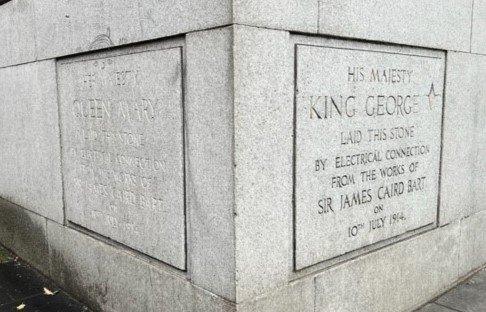
Caird Hall's foundation stone was laid in 1914
Enter philanthropist James Caird, a local jute baron.
Mr Baxter said: "He specifically wanted a hall different to anything Thomson envisioned.
"But this is 1914, and the big problem is the First World War intervenes.
"They continue building but things get slowed down and Caird himself dies during this time, so he never gets to see the hall completed."
The foundation stone was laid in July 1914 by King George V and Queen Mary, with work beginning the following year.
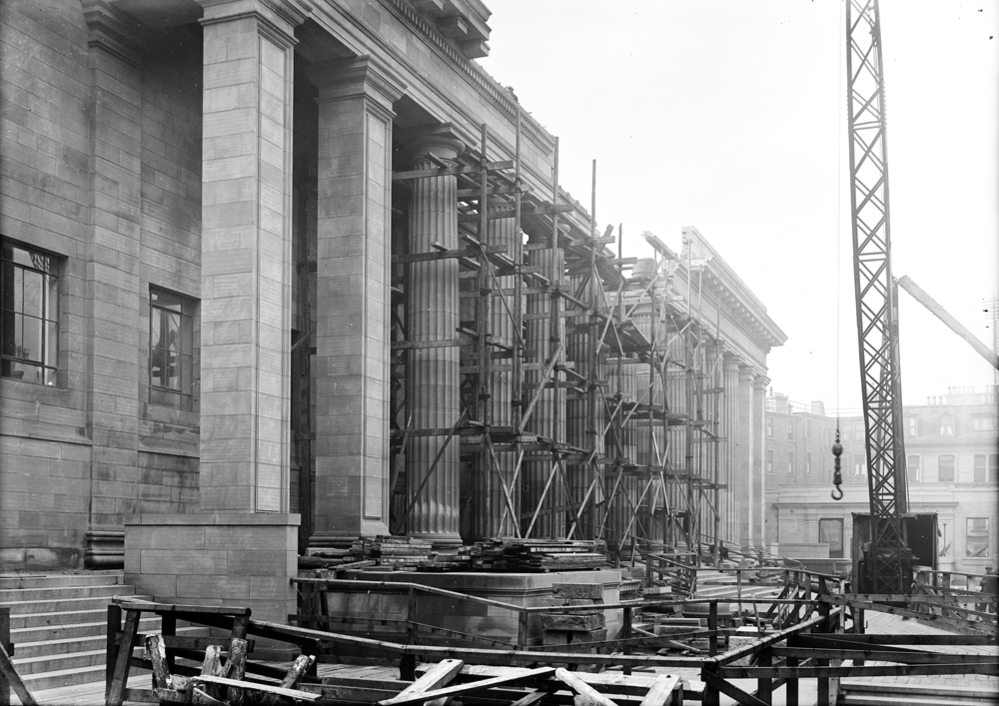
By the early 1920s, enough progress had been made for parts of the hall to be used, most famously the 1922 election count where Winston Churchill lost his seat as a Dundee MP.
Caird Hall was officially opened on 26 October 1923 by the Prince of Wales, later known as Edward VIII until his abdication in 1936.
Mr Baxter said: "This was a massive occasion for Dundee, as it was the most important civic building that had been erected for many, many years.
"Dundee was also recovering from the war, so it's looking for something that's going to be a bit of a pick-up.
"Also, in the 1920s the Prince of Wales was a very popular figure, he was seen as a bit of a man of the people and a glamorous figure."
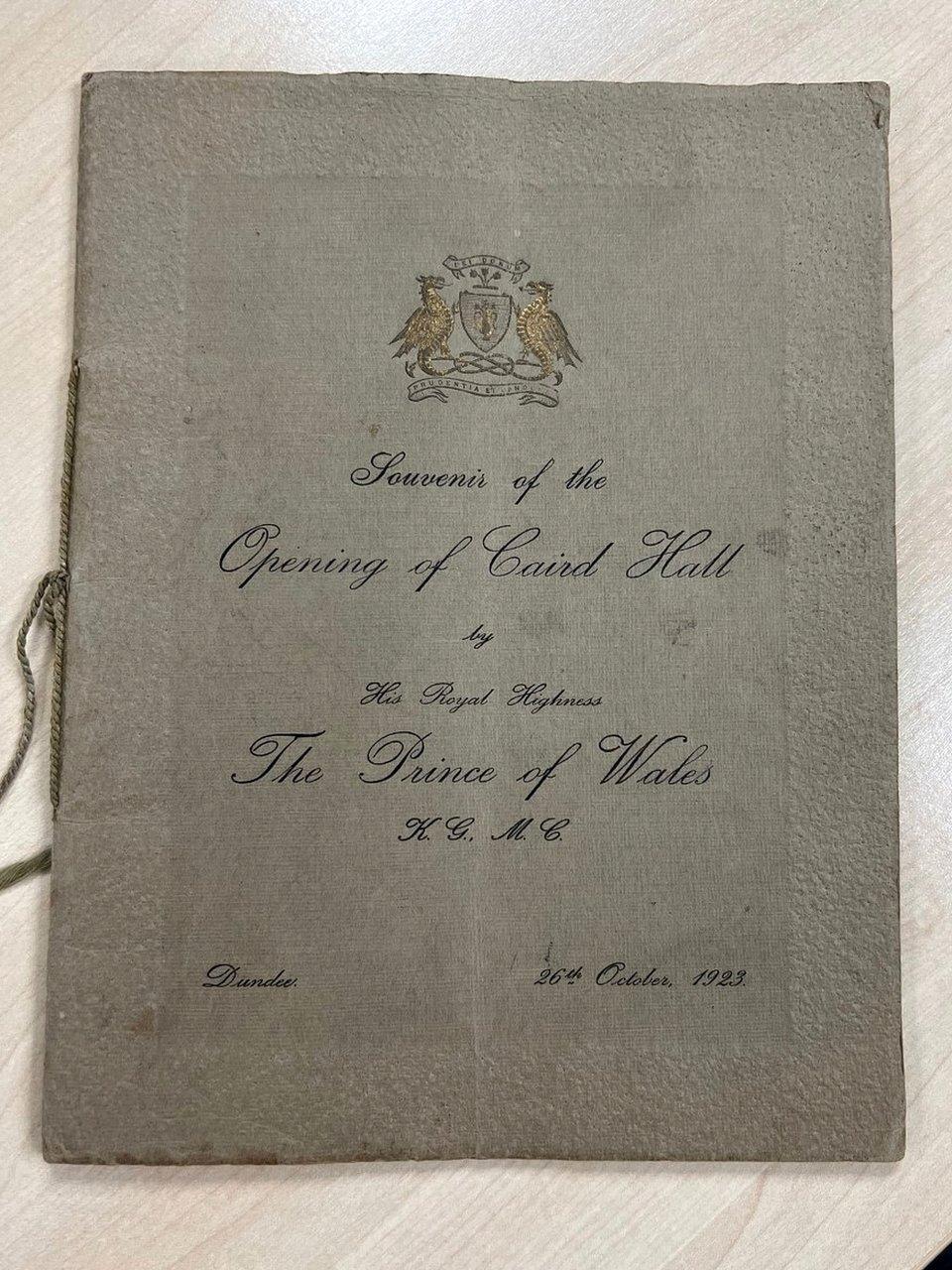
Caird Hall was welcomed by the city, albeit with traditional grumbles about whether it was money well spent.
Mr Baxter said: "Obviously there were some people worried that you were spending money on this when you might have been better spending on housing and other issues.
"That had always been a problem when civic improvement had been discussed in Dundee."

Archivist Kenneth Baxter has researched the history of the building
With the hall open, it began to be used for a wide variety of events, including election counts, concerts, film screenings, and lectures.
One of the most famous appearances was Frank Sinatra, whose first show in 1953 drew fewer than 600 people, a quarter of the venue's capacity.
A letter to the Courier newspaper that week claimed that teenagers, who comprised most of Sinatra's fans at the time, couldn't afford the high ticket prices.

The Beatles indulged in some flower arranging before their 1964 Caird Hall appearance
There was no such problem when The Beatles played there to packed houses in 1963 and 1964, with the Fab Four sneaked out of the venue past screaming fans via a coal cellar.
In 1967, the venue was used for the inauguration ceremony of Dundee University, with the university still using the hall for its annual graduations.
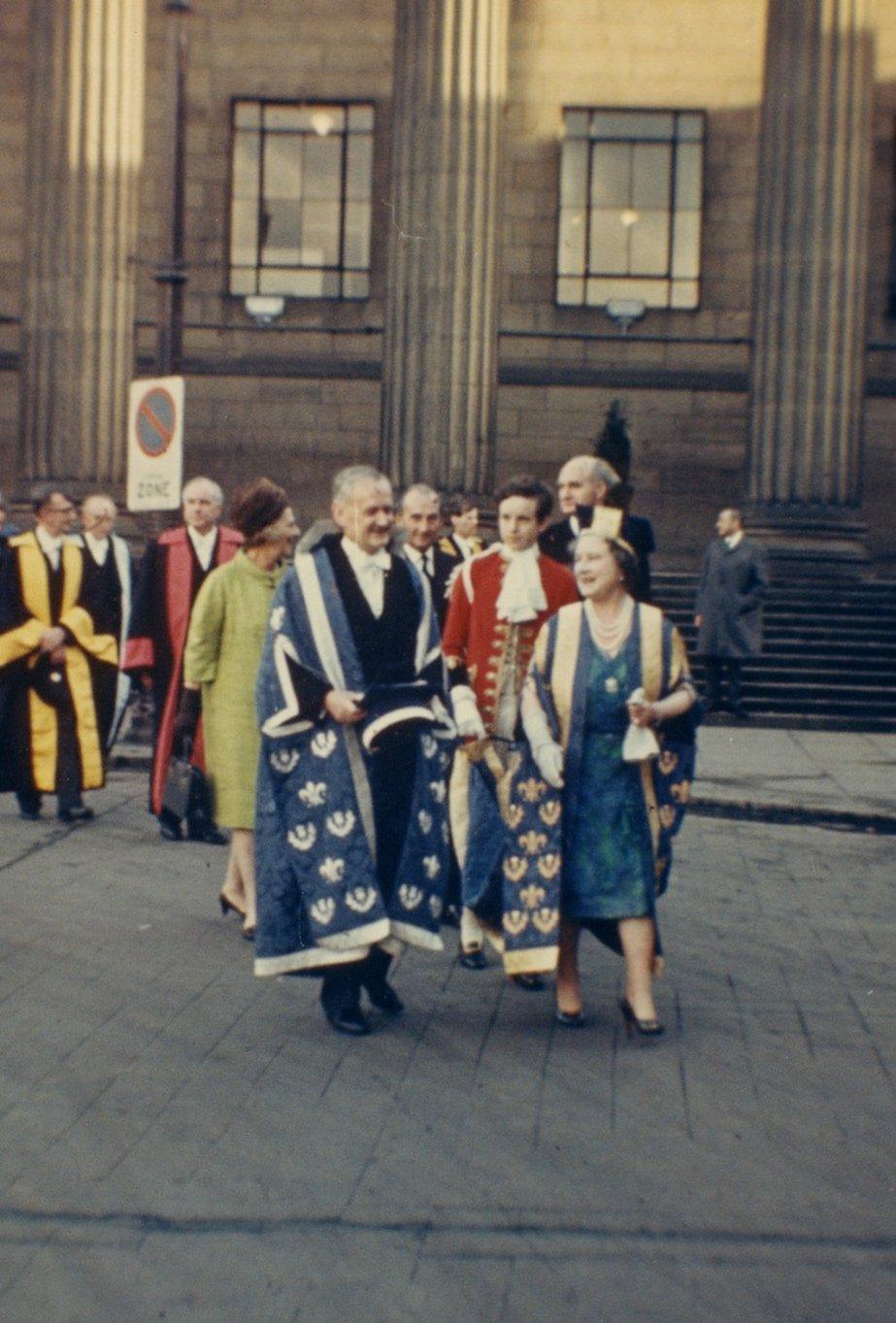
The Queen Mother attended Dundee University's inauguration ceremony at the hall in 1967
But one of the most notable moments in the hall's history took place outside when it was transformed into Moscow's Bolshoi Ballet theatre for the 1983 BBC drama An Englishman Abroad.
Road salt doubled for snow, although council workers need not have bothered as it snowed for real shortly afterwards.
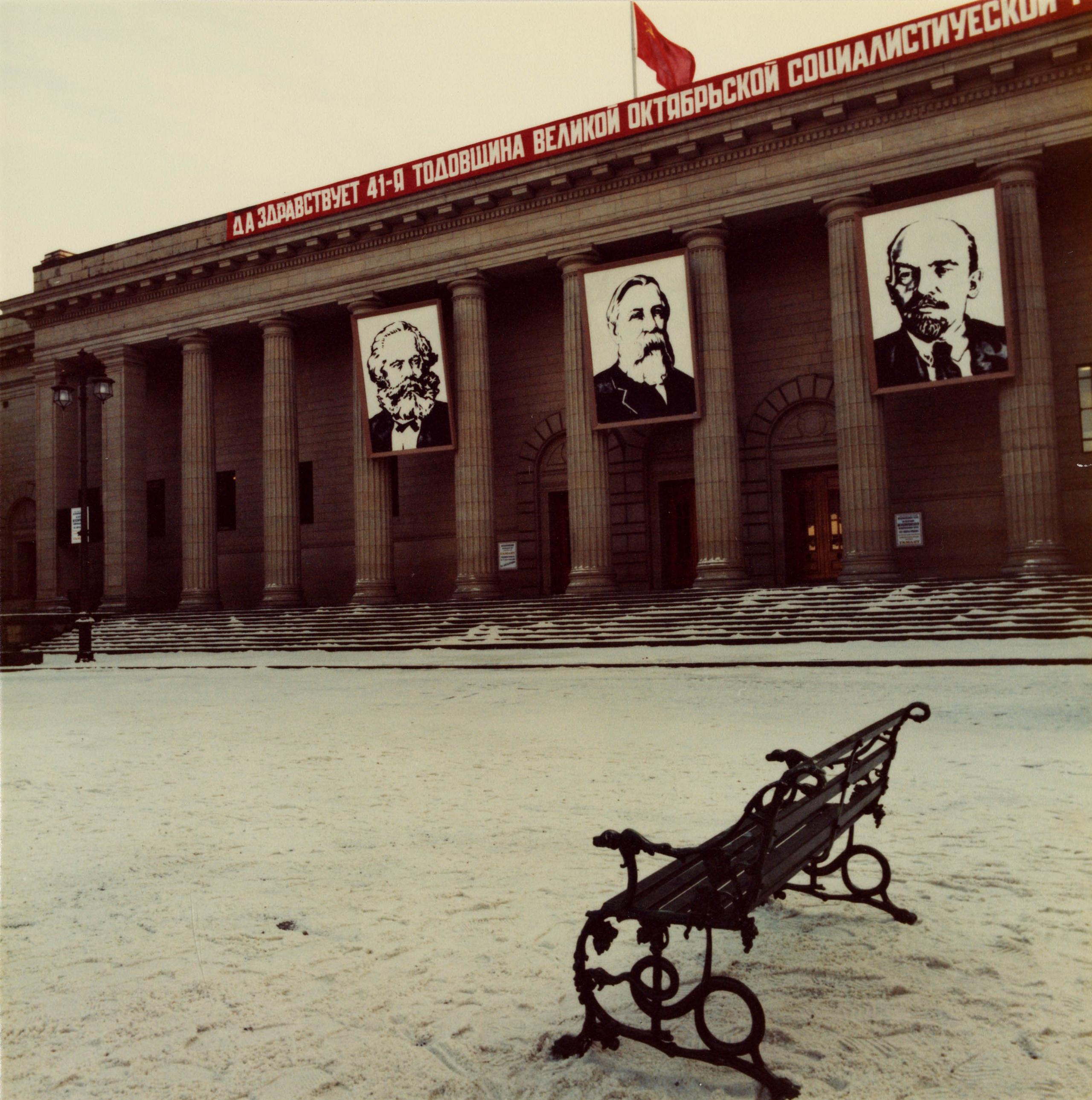
The hall doubled as the Bolshoi Ballet Theatre in Moscow for a 1983 TV drama
In 2012, the Dalai Lama spoke at Caird Hall, saying afterwards: "Today my blood pressure is good, which must be a blessing of being in Scotland."
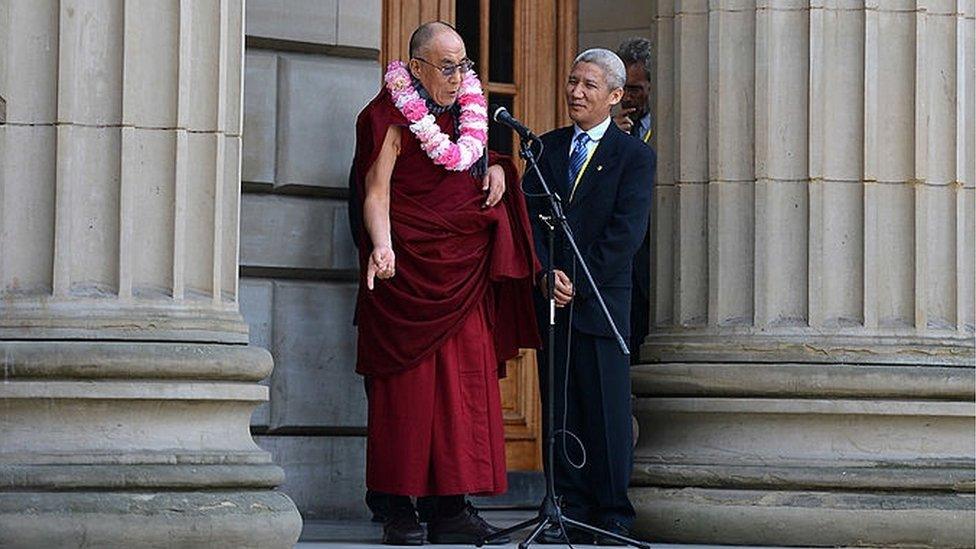
The Dalai Lama spoke at Caird Hall on his fifth visit to Scotland in 2012
Despite celebrating its centenary, very little of the actual building has changed.
Mr Baxter said: "It's remarkable in that sense. I don't think if somebody who had been at the opening in 1923 came along today, they would see much of a change,
"I think there would be a massive outcry if anybody suggested massive modifications, or moving it, I think it's too well-loved."
"If you ask anybody, they will probably have a memory of the Caird Hall - it's loved, it's part of the city."

Do you have an idea for a story we could cover? Email our local reporters in Tayside and Central: dundee.planning@bbc.co.uk, external
Related topics
- Published3 May 2018
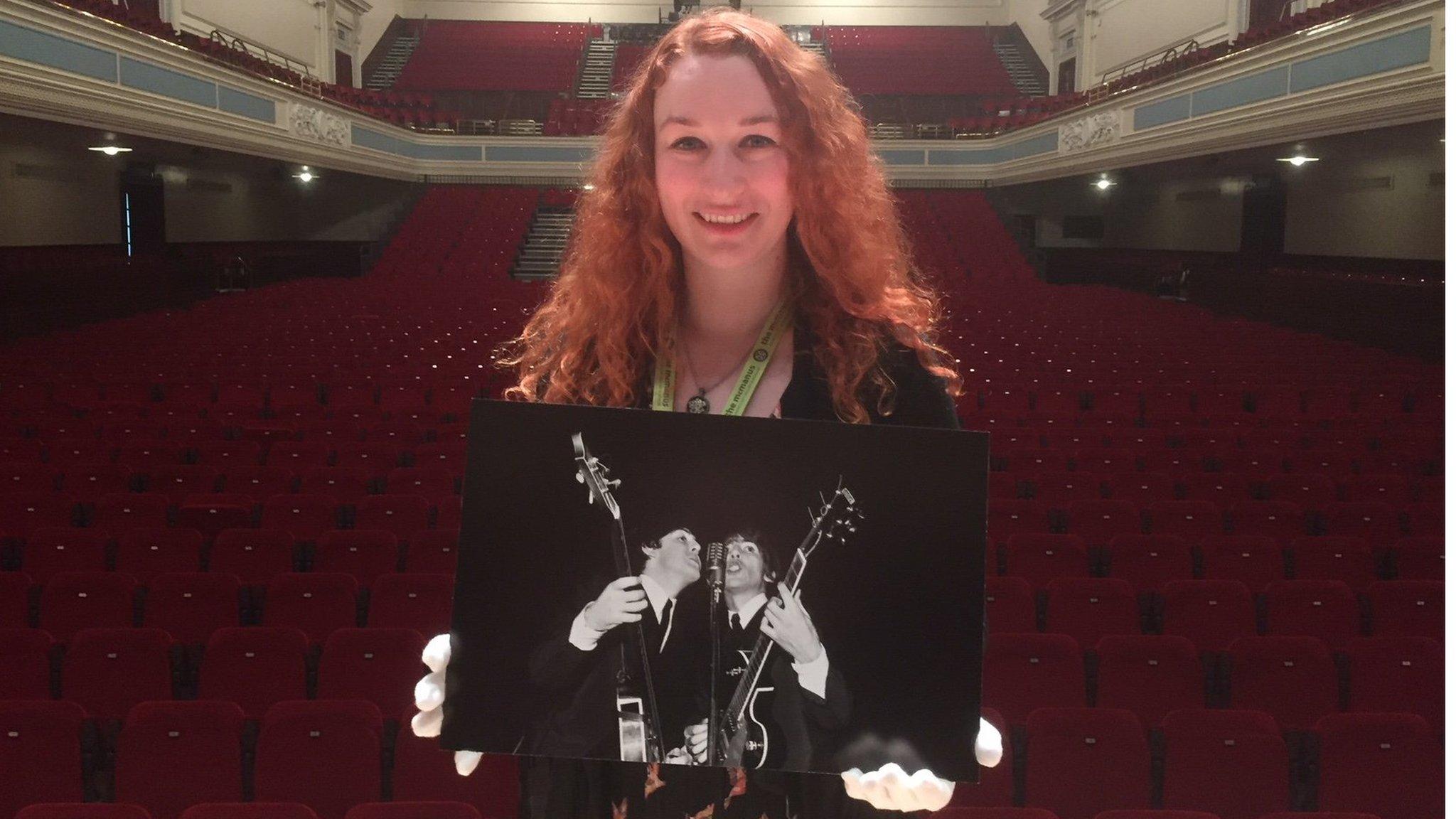
- Published7 March 2018
